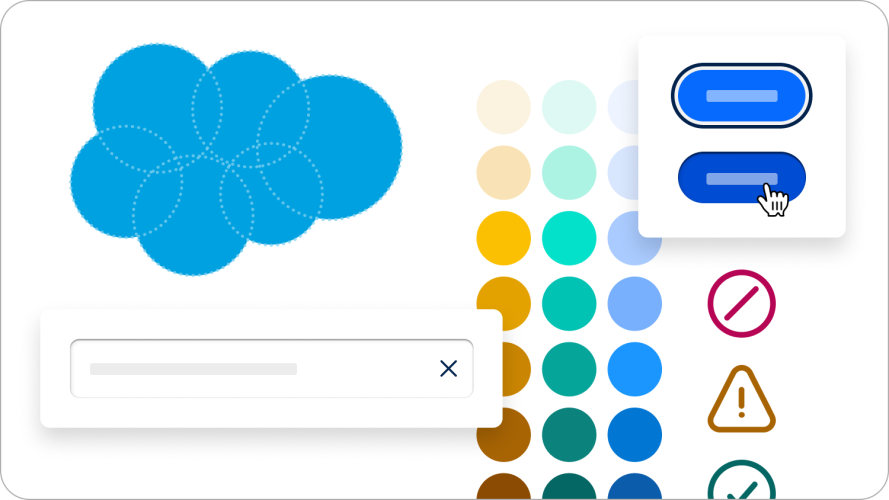How to Use Stephen Covey’s Circle of Influence to Create Impactful Comp Plans

Learn how Steven Covey's thought leadership on influence can help you build sales compensation plans that engage reps.

Samuel Holzman
Designing sales compensation plans can feel like being stuck in a maze of uncertainties. You can create data-driven plans with all the right business goals in mind, and still be left with critical questions. Will you motivate sales reps to go the extra mile? Will your comp plans earn your business more revenue? Or will your plans fall drastically short of expectations?
The tough answer is that there’s no way to be 100% sure your plans will work. But what if there was a way to double down on the variables within your control? What if you could build comp plans in a way that mitigates uncertainty and steers reps in the right direction?
In today’s article, we’ll introduce you to a framework that will help you do exactly that. Read on to learn how to design comp plans using a concept known as the Circle of Influence.
What you’ll learn:
- What is the Circle of Influence?
- Why the Circle of Influence matters in commission planning
- Benefits of using the Circle of Influence for commission planning
- Example: Circle of Influence-driven commission planning
- Best practices for leveraging the Circle of Influence in your commission plans
Motivate your team with transparent incentive pay
Discover the power of automating commissions with Salesforce Spiff, and easily create incentive programs that scale.



What is the Circle of Influence?
The Circle of Influence is a concept coined by Stephen Covey, author of the bestselling book, “The 7 Habits of Highly Effective People.” Covey uses this principle to emphasize one of his key themes: Become a proactive person by focusing on aspects of your life within your control.
Every single human being has a wide range of concerns, from the personal (our health, families, financial well-being, challenges at work, etc.) to the environmental (politics, the stock market, weather conditions, you name it.) All of these various worries and interests make up our Circle of Concern.
The Circle of Concern includes a smaller circle known as the Circle of Influence, sometimes called the Circle of Control. These are the things we care about and actually have some degree of control over. Everything outside of the Circle of Influence makes up the outer ring of the Circle of Concern — things we worry about but have no control over.
For example, your salary is obviously important to you. You probably care about getting a raise this year, and you also worry about your company’s overall performance, as the business’s success may play a factor in how every employee is compensated.
There are proactive steps you can take to better your chances of earning a raise: Delivering on specific KPIs, exhibiting strong leadership skills, being a positive and helpful team player — these are things you can control, which puts them inside your Circle of Influence.
But there are other factors that also might affect your chance at a raise: Your company’s overall earnings, the state of your industry, the economy at large, and so on. These concerns aren’t within your control, so they exist inside your Circle of Concern but outside your Circle of Influence.
When you focus on the outer ring of the Circle of Concern, you exert unnecessary time and energy and cause yourself undue stress. Proactive people zero in on their Circle of Influence. This allows them to stop worrying about uncontrollable variables and instead focus on the things they can directly impact.
Why the Circle of Influence matters in commission planning
The typical sales organization is composed of several different teams and roles, each with their own specific function. These teams have individual goals but also share a number of big-picture goals related to driving revenue for the business.
As a result, each sales employee is often juggling a range of competing concerns and priorities. If your commission plans don’t encourage the behaviors and outcomes each rep should focus on, reps will struggle to achieve quota attainment.
Instead of being focused, your team might stress over market conditions, internal politics, or other detrimental behaviors. Or they might focus on what other teams are doing that might have a positive or negative impact on their earnings.
Stephen Covey’s Circle of Influence and general ideology around influence and control are great tools to help you avoid those pitfalls and reap the following benefits.
Benefits of using the Circle of Influence for commission planning
Let’s look at the key advantages of implementing commission plans using the Circle of Influence framework as a guide.
1. Improved focus and efficiency
An effective compensation plan should not only reward desired sales outcomes but also serve as a roadmap. It should highlight the individual objectives and actions someone should adhere to in order to achieve those desired outcomes. By emphasizing commission plan elements that are in each employee’s Circle of Influence, you’ll incentivize them to ignore superfluous activities and keep their focus trained on what matters most to their role.
2. Increased motivation
Understanding how to motivate sales employees is critical to commission planning. Motivation isn’t just about how badly someone wants to achieve a goal, it’s about making that goal achievable with a clear path forward. Sure most salespeople will tell you they want to earn as much money as possible, but what’s actually possible and how do they get there?
When salespeople feel they have control and influence over their objectives, they’re more able and thus more motivated to achieve them. On the other hand, if they only vaguely understand what actions will get them closer to their goals, they’ll be more prone to uncertainty and indecision, and ultimately lack the motivation needed to hit their targets.
3. Higher job satisfaction
Sales reps, like most employees, want to know that their effort will directly impact their outcomes. When someone works hard and doesn’t see their effort reflected in their results, they’re probably not going to be satisfied in their role.
Commission plans that align with the Circle of Influence send a clear message to every sales employee: Your success is in your hands. If they exceed expectations, they’ll understand why and can therefore replicate those methods in the future. And if they fall short, they’ll know where they went wrong and understand what they can do to improve next quarter. (A great way to ensure reps know where they stand is to onboard incentive compensation software that delivers real-time visibility into commission earnings.)
Example: Circle of Influence-driven commission planning
Let’s say your company is struggling to hit new business targets due to economic conditions, so leadership wants to heavily prioritize customer retention. As a leadership team, you agree to make slight adjustments to sales rep comp plans.
But here’s the issue: Customer retention hinges on many different factors, some of which don’t directly fall on a rep. Let’s say you adjust comp plans so that they only reward reps after an account has remained a customer for six months. This might cause the reps to worry too much about onboarding, ongoing product support – things that are more in the customer success team’s wheelhouse than their own.
The result? Your commission plan has the opposite of its intended effect. Reps are paying attention to what customer service managers are doing to drive retention, drawing their focus away from new deals.
Now imagine you use the Circle of Influence to adjust your comp plans. That means you add elements that are directly tied to things within your reps’ control so they can secure better-fit accounts that are more likely to remain long-term customers.
For example, you might offer an additional cash bonus for every closed-won deal where the account meets very specific criteria – like company size, industry, multi-department buy-in, compatible technology, and so on.
Now, with this plan adjustment, reps will focus on working and prioritizing accounts that are more likely to have long-term success with your company’s products, thus improving retention rates.
Best practices for leveraging the Circle of Influence in your commission plans
Now that you’ve got a good grasp on the Circle of Influence, here are a few tips to effectively implement this concept as you create and adjust commission plans.
1. Map sales objectives to specific roles
Specificity is critical to commission planning. You’ll want to make sure your plans don’t rely on “loose” commission components — highly general goals and metrics that aren’t tightly aligned with a salesperson’s day-to-day responsibilities.
Start by breaking your larger business goals into smaller objectives by job function. What activities must a rep prioritize on a daily basis in order for the organization to hit its goals? What about an inbound sales development representative (SDR)? Outbound SDR?
By cascading large goals down the ranks and breaking them into smaller sub-objectives, you’ll help your sales teams understand what shared goals they’re working towards. More importantly, you’ll show them what they should and shouldn’t focus on in order to support those shared goals.
2. Incentivize a combination of activities and outcomes
It’s an age-old question: What’s more important to incentivize – the results that a salesperson produces, or the activities required to produce those results? The concept of Circle of Influence presents a compelling argument for incentivizing both activities and outcomes.
Here’s an example: An inbound SDR has control over how fast they respond to a qualified lead. They have less control over what happens after that lead is passed off to a rep. So in an inbound SDR’s comp plan, what happens if you only incentivize the activity (lead follow-up time) or the outcome (closed-won opportunities and revenue)?
If their plan over-emphasizes the activity, it might result in a high volume of low-quality, ineffective follow-ups. On the other hand, if you only reward them for closed-won opportunities, the SDR might become disconnected and demotivated because of how little control they have over those outcomes.
That’s why it’s important to balance both activities and outcomes in commission plans, specific to the role you’re targeting. You can’t only reward an inbound SDR for qualifying and swiftly responding to leads, of course. But if you assign earnings to actions like lead response time — in addition to outcomes like closed-won revenue — your team members will be motivated and laser-focused on the activities and behaviors required to meet their goals.
3. Be specific, but not complicated
As we’ve already covered, there are a lot of variables in a salesperson’s Circle of Concern that they can’t control or influence. But their Circle of Influence can become overcrowded as well. A sales rep might understand the long list of behaviors and outcomes they have influence over, but struggle to prioritize.
Although we’ve stressed the importance of specificity when it comes to creating effective comp plans, it’s important to clarify that “specific” doesn’t and shouldn’t mean “complicated.” Don’t overload your comp plans by incentivizing every single activity within a salesperson’s Circle of Influence. Instead, isolate the most important activities so sales reps know what their key priorities are.
Chris Semain, principal and tech practice leader at Alexander Group, said it best: “Too simple of a plan and you’re not going to drive all the behaviors you want. At the same time, if you have 10 priorities and they’re all number one, you’re going to wind up with a plan that your ops team won’t be able to administer and reps won’t be able to understand. You need to be mindful of what you can operationalize in your environment.”
Use the Circle of Influence to emphasize control and limit distraction
Remember: Control is not an either/or concept. There are variables that a sales rep can completely control, some they only have indirect control over, others they can strongly influence, and some they can’t impact at all — and the same goes for the leaders designing comp plans. Use the Circle of Influence concept to keep those variables where they belong. When your commission plans emphasize worthwhile actions and mitigate futile concerns, you’ll help sales reps focus on their own personal Circle of Influence.
Launch sophisticated compensation plans fast
Is outdated commissions management hurting your growth? See how to quickly create automated incentive plans that motivate your reps.


























